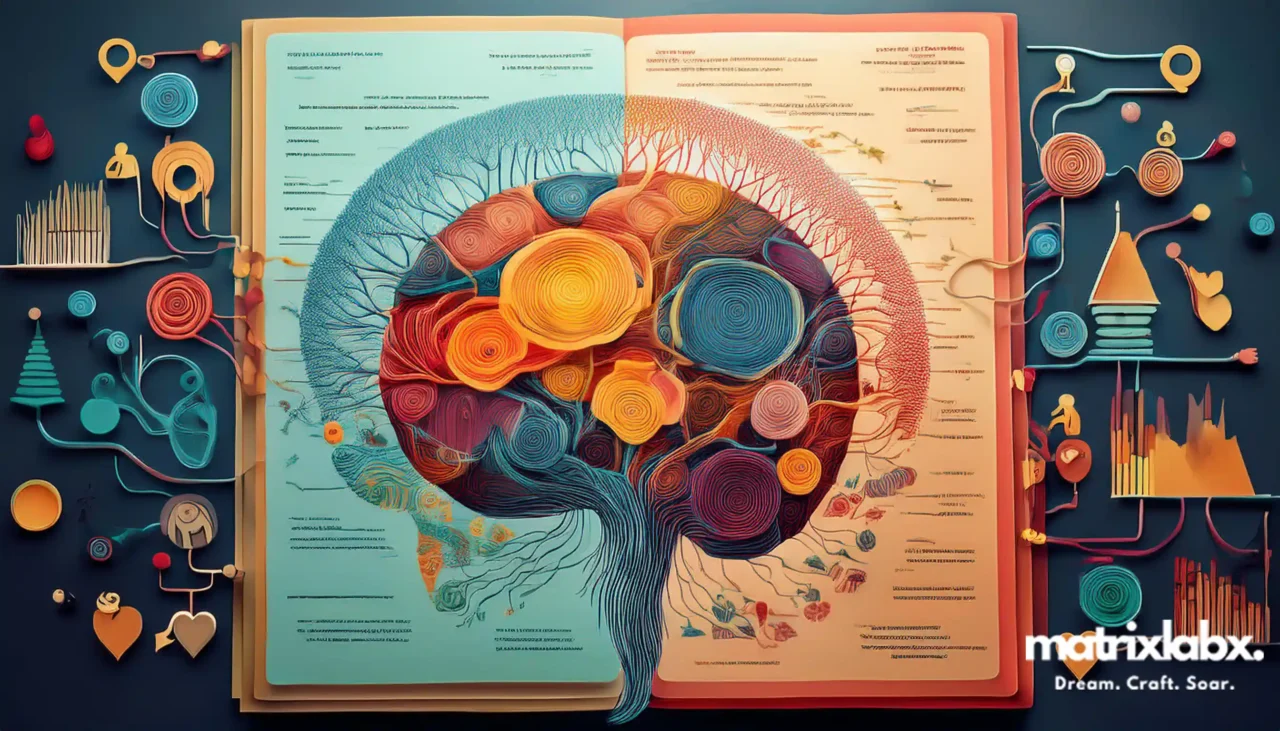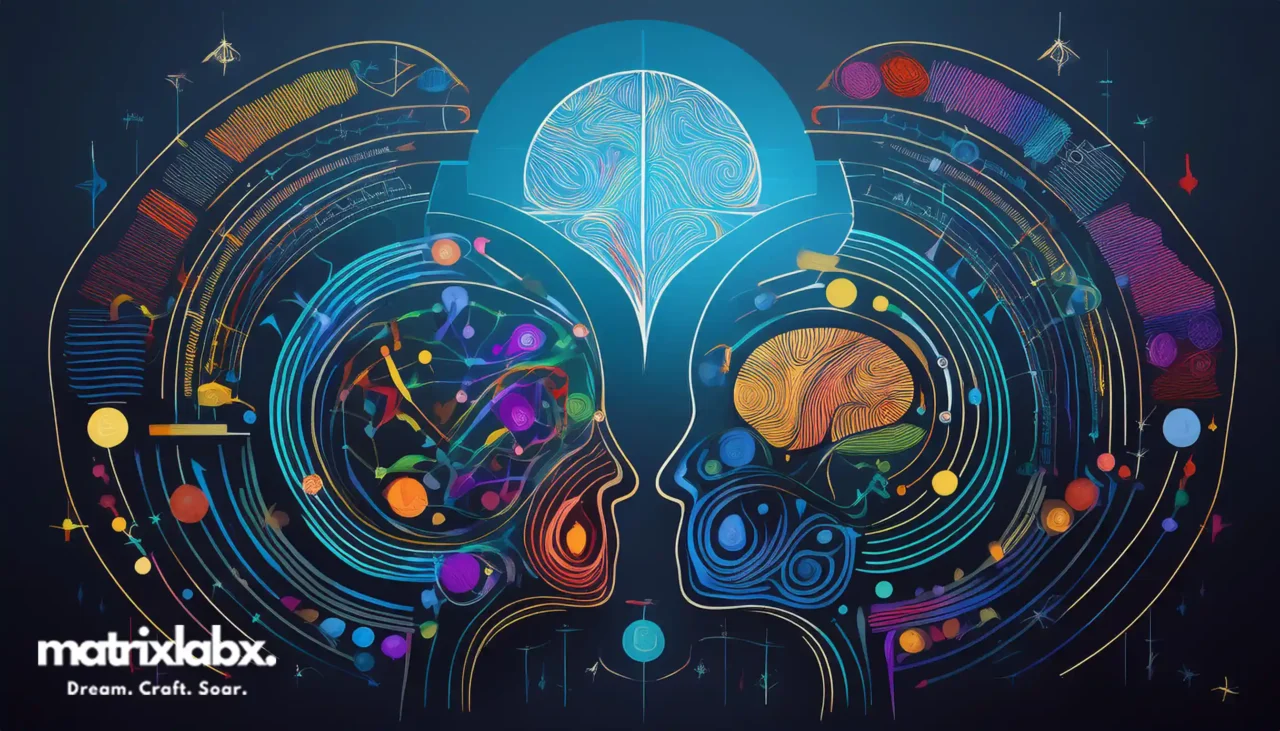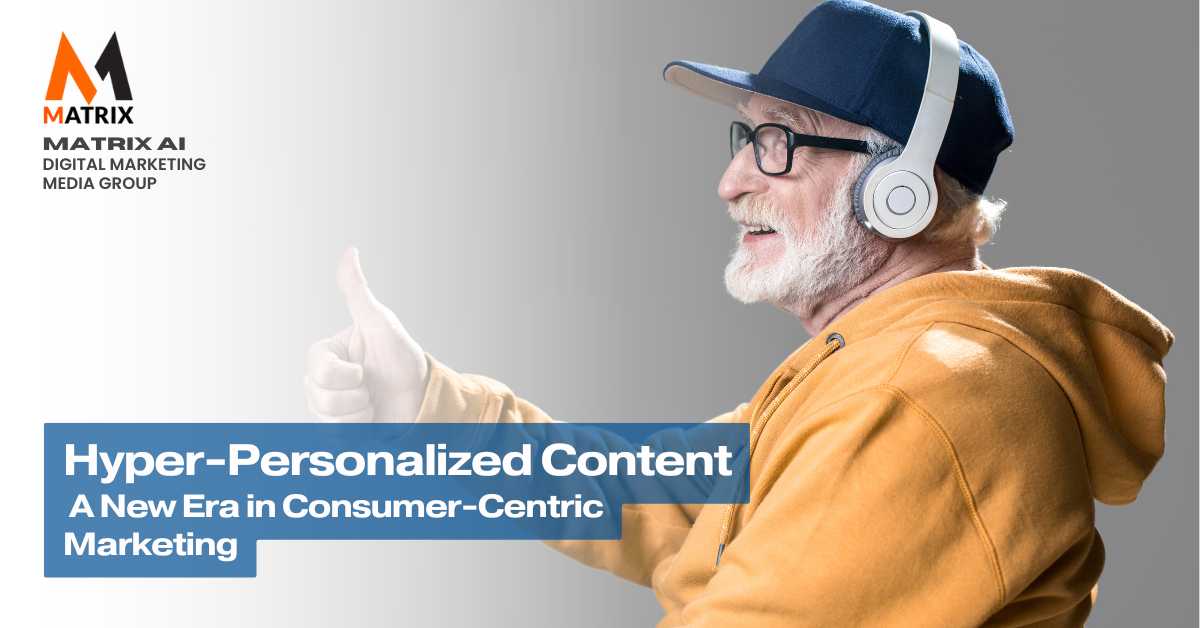The Power of Hyper-Personalized Content: Marketing’s New Frontier
In today’s fast-paced digital world, 91% of consumers will likely shop with brands that recognize, remember, and provide relevant offers and recommendations.
Yet, despite this staggering statistic, many businesses still struggle to connect with customers on a deeper, more personal level. The solution? Hyper-personalization.
The Problem: Scaling Content Generation Feels Impossible
Content managers are under immense pressure to produce high-quality content at an unprecedented speed.
With growing demands for blog posts, social media updates, video scripts, and SEO-driven content, scaling these operations is impossible. The result?
Overworked teams, missed deadlines, and content that needs more consistency and creativity to engage audiences.
The Struggle is Real
- Drowning in Data: You have mountains of customer data, but harnessing it for personalization feels overwhelming.
- Time Crunch: Crafting individual messages for each customer is not scalable.
- One-Size-Fits-All Fatigue: Your audience craves relevance, and generic content no longer cuts it.
- Measuring ROI: Proving the impact of personalization efforts can be elusive.
Falling Behind in a Competitive Landscape

The inability to scale content production efficiently leads to a dangerous domino effect. Your competitors are producing more content faster.
Your brand’s visibility declines as you struggle to keep up, and worse, your existing content doesn’t resonate because rushed production leads to diluted messaging. Content teams feel the strain, creativity diminishes, and what was once an inspired content strategy becomes a burden.
The Solution: AI-Driven Content Generation
Imagine generating vast amounts of content without sacrificing quality or creativity. Our AI marketing solution automates the most tedious aspects of content creation, enabling you to produce engaging, SEO-optimized material in record time.
With machine learning insights, you can tailor each piece of content to your audience’s needs, ensuring relevance and maximizing engagement—all while freeing up your team to focus on strategy. This is how you scale without stress.
Hyper-Personalization: Beyond Basic Marketing

While traditional personalization tailors content to demographic segments, hyper-personalization goes far beyond that. It uses real-time data, AI-driven insights, and behavioral patterns to craft individualized experiences for each customer.
This approach doesn’t just suggest a product you may like; it anticipates your needs, speaks to your preferences, and interacts with you in a meaningful, highly contextual manner.
Why Does It Matter?
In a marketplace where consumers are constantly bombarded with generic messaging, hyper-personalized content can differentiate between an engaged customer and one who clicks away.
Brands that successfully implement hyper-personalization are seeing skyrocketing engagement, loyalty, and conversion rates, proving that this strategy is more than just a trend—it’s the future of consumer-centric marketing.
Hyper-personalized content represents the next frontier in digital marketing. At its core, it involves creating highly individualized consumer experiences based on real-time data, behavioral insights, and contextual relevance.
AI-Agentic System for Content Marketing
AI-Agentic systems like OrchestraAI for content marketing are advanced, autonomous technologies designed to execute content strategies with minimal human intervention.

Unlike traditional personalization, which focuses on broader demographic data, hyper-personalization delves deeper into the nuances of individual behaviors and preferences, crafting content that speaks directly to each customer’s unique needs.
In today’s crowded digital landscape, the importance of personalization cannot be overstated. Consumers are bombarded with messages from all directions, and they’ve come to expect more than just generic outreach.
The ability to cut through this noise with content that resonates personally is crucial for any brand striving to build lasting customer relationships.
Hyper-personalization promises to take this connection to the next level, ushering in a new era of consumer-centric marketing where the customer feels understood, valued, and engaged at every touchpoint.
The Evolution of Content Personalization

Content personalization has evolved significantly over the years. Early efforts focused on demographic targeting and market segmentation.
Brands would group customers based on broad categories like age, gender, or location and tailor their content accordingly.
While effective to some extent, this approach often needed more depth to truly engage individuals, as it relied on assumptions rather than real-time data.
The advent of AI, machine learning, and advanced data analytics has changed the game. These technologies enable brands to move beyond static segmentation into dynamic, real-time personalization.
AI algorithms can now analyze vast amounts of data, recognizing patterns in consumer behavior and adjusting content to suit those behaviors on the fly. Machine learning models learn from each interaction, becoming more sophisticated over time and enabling brands to deliver increasingly relevant content.
Key milestones in this shift include the rise of predictive analytics, the integration of machine learning into marketing platforms, and the development of real-time content optimization tools.
These advancements have paved the way for hyper-personalization, allowing marketers to fine-tune their strategies with unprecedented precision and adaptability.
What is Hyper-Personalized Content?
Hyper-personalized content is an advanced personalization that goes beyond basic demographic data to leverage real-time data, behavioral insights, and contextual relevance. The aim is to deliver content relevant to the individual and their current situation and needs. AIContentPad supports your content needs.
At the heart of hyper-personalized content lies three key components: real-time data, behavioral insights, and contextual relevance. Real-time data allows marketers to adjust content dynamically based on an individual’s current interactions.
Behavioral insights offer a deeper understanding of how individuals interact with content over time, enabling the creation of predictive models. Finally, contextual relevance ensures that the delivered content is appropriate for the specific moment, considering location, device, and mood.
Examples of hyper-personalized content abound. Dynamic websites that adjust their layout and messaging based on the user’s past interactions, personalized email campaigns that deliver tailored product recommendations, and chatbots that adapt their responses based on user preferences are just a few illustrations of how brands harness this powerful tool.
The Role of Data in Hyper-Personalization

Data is the lifeblood of hyper-personalized content. It’s the key to understanding the intricate details of consumer behavior and tailoring content to meet their needs. Three primary sources of data power this level of personalization: first-party data, third-party data, and user-generated data.
First-party data is collected directly from interactions between the brand and the consumer, such as website visits, app usage, or customer service interactions. This data is invaluable for building a detailed profile of individual customers.
Third-party data, often purchased from external sources, provides additional insights into consumer behaviors outside a brand’s ecosystem.
Finally, user-generated data, such as reviews, social media posts, or feedback forms, offers qualitative insights into consumer preferences and perceptions.
However, collecting and using this data comes with ethical considerations.
Data privacy concerns are at the forefront of consumers’ minds, especially with the introduction of regulations such as the General Data Protection Regulation (GDPR) in Europe and the California Consumer Privacy Act (CCPA) in the United States.
Marketers must navigate these regulations carefully, ensuring transparency and consent in data collection practices.
Striking the right balance between personalization and consumer trust is essential. Overstepping privacy boundaries can damage the brand, while a thoughtful, consent-based approach can foster loyalty and trust.
Benefits of Hyper-Personalized Content for Businesses
70% of agencies need help integrating AI solutions.
70% of agencies need help integrating AI solutions into their tech stack, citing a lack of interoperability as a major barrier. 85% of marketing agencies need more in-house expertise to manage and deploy multi-AI agent systems effectively.
Hyper-personalized content delivers many benefits to businesses, directly impacting the bottom line. One of the most significant advantages is enhanced customer engagement.
When consumers feel that a brand understands their needs and delivers content that aligns with them, they are more likely to engage meaningfully. This heightened engagement often increases customer loyalty, as personalized experiences create a deeper emotional connection between the brand and the consumer.
Another major benefit is the impact hyper-personalization has on conversion rates and sales. Tailored content speaks directly to the consumer’s immediate needs and preferences, making it far more likely that they will act on it.
Hyper-personalization can significantly improve conversion metrics, whether a customer is purchasing, signing up for a service, or engaging with a piece of content.
Furthermore, hyper-personalization enhances customer retention and lifetime value. Brands can keep customers returning by continually delivering content that evolves with the consumer’s journey. This ongoing engagement fosters long-term relationships, increasing customer lifetime value.
Brands like Netflix, Amazon, and Spotify have demonstrated the immense power of hyper-personalization.
Netflix’s recommendation engine, for example, curates content based on individual viewing habits, while Amazon’s personalized product suggestions keep users engaged and returning to the platform.
Spotify’s hyper-personalized playlists, such as Discover Weekly, provide users with a unique listening experience tailored to their tastes, reinforcing brand loyalty.
Challenges of Implementing Hyper-Personalization

Despite its many benefits, implementing hyper-personalization has its challenges. One of the biggest hurdles is the technical complexity.
Integrating the various data sources needed to power hyper-personalization—such as customer relationship management (CRM) systems, analytics platforms, and automation tools—can be daunting.
These systems must work seamlessly together to deliver real-time personalized experiences, requiring high technical expertise and infrastructure.
Another challenge is balancing personalization with data privacy concerns. As mentioned earlier, regulations like GDPR and CCPA place strict guidelines on how consumer data can be collected and used.
Marketers must ensure that they follow these regulations and are transparent with consumers about how their data is being used.
Over-personalization is another potential pitfall. While consumers appreciate tailored content, there is a fine line between personalization and intrusion. Bombarding customers with overly targeted content can lead to discomfort and even alienation.
The key is ensuring personalization feels natural and unobtrusive, providing value without crossing into invasive territory.
Businesses must adopt a thoughtful approach to overcome these challenges. Investing in the right technology and infrastructure, developing a robust data strategy, and maintaining clear communication with consumers about data usage are all critical steps toward successfully implementing hyper-personalization. AI Blog Post Generation GPT Agent: Unleash the Future of Content Creation
How Marketers Are Spending Their Money
In 2025, Chief Marketing Officers (CMOs) are strategically allocating their budgets to navigate a rapidly evolving landscape characterized by technological advancements, shifting consumer behaviors, and economic uncertainties.

Best Practices for Creating Hyper-Personalized Content
Creating hyper-personalized content requires a strategic approach that balances data, technology, and creativity.
One of the first steps is effective audience segmentation. While hyper-personalization focuses on the individual, segmenting the audience into smaller, more focused groups can help streamline the process.
Marketers can create more relevant and impactful content by identifying key behavioral patterns and preferences within these segments.
Leveraging AI and machine learning tools is essential for real-time content adaptation. These technologies can quickly process vast amounts of data, allowing marketers to adjust real-time content based on individual user behavior.
AI-driven tools can also help automate many aspects of hyper-personalization, from email campaigns to website content, ensuring a seamless consumer experience.
Measuring and optimizing performance is another crucial aspect of hyper-personalization. Key metrics to track include engagement rates, conversion rates, and customer retention.
By regularly analyzing these metrics, marketers can identify what’s working and make adjustments to improve performance over time.
Testimonials: CMOs Speak on Hyper-Personalized Content
“Hyper-personalization is no longer optional—it’s essential. In our most recent campaign, we saw a 42% increase in customer engagement using real-time data and AI-driven insights. Moreover, our retention rates skyrocketed as customers began to feel truly understood by our brand. It’s a game-changer.”
– Laura Bennett, CMO of Stellar Marketing Group
Expert Opinions: Hyper-Personalization is Redefining Marketing
“Today’s consumers expect more than just targeted ads; they expect brands to anticipate their needs. Hyper-personalization allows CMOs to transform the customer journey from impersonal to intimate. Brands investing in this strategy build stronger emotional connections, leading to higher lifetime customer value.”
– Dr. Mark Davis, Marketing Professor and Author of “The Age of Data-Driven Marketing”
2025 ALERTS: The Chatbot Era has Ended
Our recent market research shows that 85% of marketing agencies need more in-house expertise to manage and deploy multi-AI agent systems effectively.
Real-World Impact: Personalized Content Drives Growth
“By integrating hyper-personalized content strategies, we increased conversion rates by 30% within just a few months. It allowed us to engage customers at every funnel stage with tailored messaging, making the experience seamless and enjoyable for the consumer.”
– Anita Martinez, Chief Marketing Officer, Evolve Digital Solutions
The Future of Hyper-Personalization in Marketing
The future of hyper-personalization looks bright, with emerging trends promising to take personalization to new heights.
Voice and visual search are poised to play a significant role, allowing consumers to interact with brands more intuitively and personally. Another exciting development is predictive personalization, where brands anticipate customer needs before expressing them.
As new technologies such as artificial intelligence, augmented reality (AR), virtual reality (VR), and the Internet of Things (IoT) continue to evolve, hyper-personalized content will become even more immersive and engaging.
These advancements have the potential to redefine the customer experience entirely, creating a seamless, individualized journey across multiple touchpoints.
Conclusion
Hyper-personalized content represents the next step in the evolution of consumer-centric marketing. By leveraging real-time data, behavioral insights, and advanced technologies, brands can create content that truly resonates with each individual.
As we move into this new era, businesses that embrace hyper-personalization will be well-positioned to thrive in an increasingly competitive landscape. AI Agentic Systems for Marketing Healthcare Organizations

